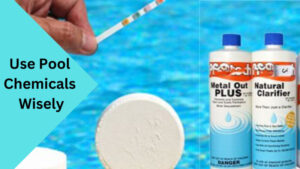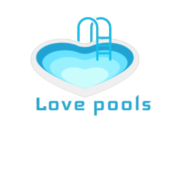Having a pool in your backyard can be a refreshing luxury during the scorching summer months. However, maintaining a clean pool without a pump might seem challenging. Fortunately, there are several simple and effective methods you can employ to keep your pool clean and inviting without the need for a pump. In this blog post, we will explore eight practical techniques and dives into the world of pool maintenance. Whether you’re looking to save on electricity costs or simply want to keep your pool pristine, these solutions will help you achieve just that.
- Method 1: Regular Skimming and Netting
- Method 2: Utilize a Pool Vacuum
- Method 3: Brush the Pool Walls and Floor
- Method 4: Use Pool Chemicals Wisely
- Method 5: Opt for Natural Cleaning Agents
- Method 6: Install a Solar-Powered Pool Circulator
- Method 7: Try a Pool Water Fountain
- Method 8: Implement the Bucket and Hose Technique
- Conclusion
Method 1: Regular Skimming and Netting
Regular skimming and netting is an essential practice to keep your pool water clean, even without a pump. Using a pool skimmer or a handheld net, you can remove debris such as leaves, twigs, insects, and any other floating particles that may accumulate on the water surface. This preventive measure helps maintain good water quality and prevents clogging of the pool’s filters.
Here are some tips for effective skimming and netting:
- Skim the water’s surface daily, especially after storms or windy days.
- Invest in a high-quality skimmer or net for maximum efficiency.
- Take your time to cover every area of the pool to ensure no debris is left behind.
- Dispose of the collected debris properly to avoid it from ending up back in the pool.
Remember, regular skimming and netting play a significant role in preventing larger particles from sinking to the bottom of the pool, ultimately reducing the need for more extensive cleaning methods.
Method 2: Utilize a Pool Vacuum
A pool vacuum is a handy tool that can help clean your pool without the need for a pump’s circulation. While there are various types of pool vacuums available on the market, the most common ones are manual and robotic pool vacuums.
To use a manual pool vacuum:
- Attach the vacuum head to a telescopic pole and connect it to the hose.
- Lower the vacuum head into the pool, keeping the pole and hose above the water surface.
- Move the vacuum head across the pool, covering all areas and focusing on the pool floor where debris tends to settle.
- Once you’ve finished vacuuming, detach the vacuum head and drain the water out of the hose.
Robotic pool vacuums, on the other hand, run independently and are equipped with sensors to navigate the pool. These devices are user-friendly and require minimal effort. They efficiently collect debris while circulating the water, ensuring a cleaner pool.
Whether you choose a manual or robotic pool vacuum, make sure to follow the manufacturer’s instructions for optimal performance and longevity of the equipment.
Method 3: Brush the Pool Walls and Floor
Regularly brushing the pool walls and floor is another integral part of pool maintenance, especially when you don’t have a pump to circulate the water. Brushing helps eliminate algae, dirt, and other contaminants that may accumulate on the pool surfaces.
Here’s how to brush your pool effectively:
- Select a pool brush suitable for your pool’s surface (concrete, vinyl, or fiberglass).
- Start brushing from the top of the walls, working your way down to the pool floor.
- Use firm yet gentle strokes to scrub the surfaces, focusing on areas with visible dirt or algae growth.
- Pay extra attention to corners, steps, and any crevices where debris may accumulate.
- After brushing, use a net or skimmer to remove any dislodged particles from the water.
By brushing your pool regularly, you prevent the build-up of stubborn stains and algae, ensuring a cleaner and more inviting swimming environment.
Method 4: Use Pool Chemicals Wisely

Proper chemical balance is crucial for maintaining a clean pool, especially when you don’t have a pump. Here are some key pool chemicals to consider and how to use them effectively:
- Chlorine: Chlorine plays a vital role in disinfecting the pool water by eliminating bacteria and algae. Use chlorine tablets or granules according to the recommended dosage indicated on the packaging. Distribute them evenly throughout the pool or via a dispensing device.
- pH Adjusters: Maintaining the correct pH level is essential for comfortable swimming and preventing equipment corrosion. Test your pool’s pH regularly using a pool testing kit, and adjust it using pH increases or pH decreases as needed.
- Algaecides: Algaecides help prevent and control the growth of algae in your pool. Choose an algaecide suitable for your pool type and follow the manufacturer’s instructions for application.
- Clarifiers: Pool clarifiers improve water clarity by coagulating small particles, making them easier to remove through filtration or manual cleaning methods. Add the recommended dosage to the pool according to the package instructions.
Remember to read and follow the instructions provided by the manufacturers when using pool chemicals. Regular testing of the water and maintaining appropriate chemical levels will help keep your pool clean and safe for swimming.
Method 5: Opt for Natural Cleaning Agents
If you prefer more natural and eco-friendly alternatives, there are several options available when it comes to pool cleaning agents. These can supplement or even replace traditional pool chemicals. Here are a few examples:
- Enzyme-based Cleaners: Enzyme-based cleaners help break down organic matter, including oils, lotions, and other contaminants that might accumulate in the pool. They can be effective in maintaining water clarity and reducing the reliance on chlorine.
- Baking Soda: Baking soda can serve as a pH increase, helping balance the pool’s pH levels. It is a safer and more natural alternative compared to commercial pH increases.
- Vinegar: Vinegar is a versatile cleaning agent that can help remove mineral deposits and stains from pool surfaces. Use a mixture of vinegar and water, and scrub the affected areas with a brush before rinsing.
While natural cleaning agents can be beneficial, it’s still important to monitor the pool’s chemical balance using proper testing kits to maintain a safe and healthy swimming environment.
Method 6: Install a Solar-Powered Pool Circulator
A solar-powered pool circulator is an eco-friendly solution that can help circulate pool water without a pump. These devices utilize solar energy to power their circulation mechanisms, reducing the reliance on electrical pumps and saving energy costs.
Solar-powered pool circulators work by harnessing the sun’s energy through built-in solar panels. The collected energy powers the circulator’s motor, which drives the water movement. While they may not offer the same circulation power as traditional pumps, they provide adequate water movement, reducing stagnation and improving water quality. Did you know How Much Do Solar Pool Heaters Cost? A Comprehensive Guide
Consider installing a solar-powered pool circulator if you are aiming for sustainable alternatives and looking to reduce electricity consumption.
Method 7: Try a Pool Water Fountain
Incorporating a pool water fountain not only adds a touch of elegance to your pool, but also promotes water circulation. While a pool water fountain may not entirely replace the function of a pump, it can help in keeping the water moving and prevent stagnation.
Water fountains create a continuous flow of water, aerating the pool and inhibiting the growth of algae. The movement also aids in distributing pool chemicals evenly, enhancing their effectiveness. Additionally, the soothing sounds and aesthetic appeal of a pool water fountain can contribute to a more relaxing and enjoyable swimming experience.
Consult with pool professionals to choose a water fountain that suits your pool design and effectively circulates the water for improved cleanliness.
Method 8: Implement the Bucket and Hose Technique
The bucket and hose technique is a simple yet effective method if you don’t have access to a pump. This method allows you to manually circulate the pool water by creating a siphon effect using a hose and a bucket.
Here’s how you can implement the bucket and hose technique:
- Fill a bucket with water from the pool, ensuring it is completely submerged.
- Connect one end of a hose to the bucket and place the other end in the pool.
- Ensure the hose is filled with water; this can be done by immersing it in the pool while keeping the open end above the water level.
- Cover the open end of the hose with your hand and quickly move it underwater, maintaining the seal.
- Release your hand and allow the water to flow into the pool, while ensuring the bucket remains submerged in water.
Repeat this process several times to create a continuous water circulation effect. Though labor-intensive, this technique helps keep the water moving and promotes better filtration, aiding in maintaining a clean pool.To explore more details and considerations regarding Pool Cleaning, our comprehensive guide on The 9 Best Suction-Side Cleaners For In-Ground Pools has you covered.
Conclusion
Keeping a pool clean without a pump is indeed feasible with the right methods and practices. By incorporating regular skimming and netting, utilizing pool vacuums and brushes, managing pool chemicals wisely, considering natural cleaning agents, and exploring alternative circulation options, you can ensure your pool remains sparkling and inviting. Remember, maintaining a clean pool enhances the overall swimming experience and promotes the longevity of your pool. So, choose the methods that suit your requirements best and enjoy a refreshing dip in your well-maintained pool all summer long.

Greetings, fellow pool enthusiasts! I’m Turner Davis, your dedicated guide to the world of pool care and maintenance. With over a decade of experience in the field, I’ve made it my mission to transform ordinary pools into extraordinary aquatic retreats.

